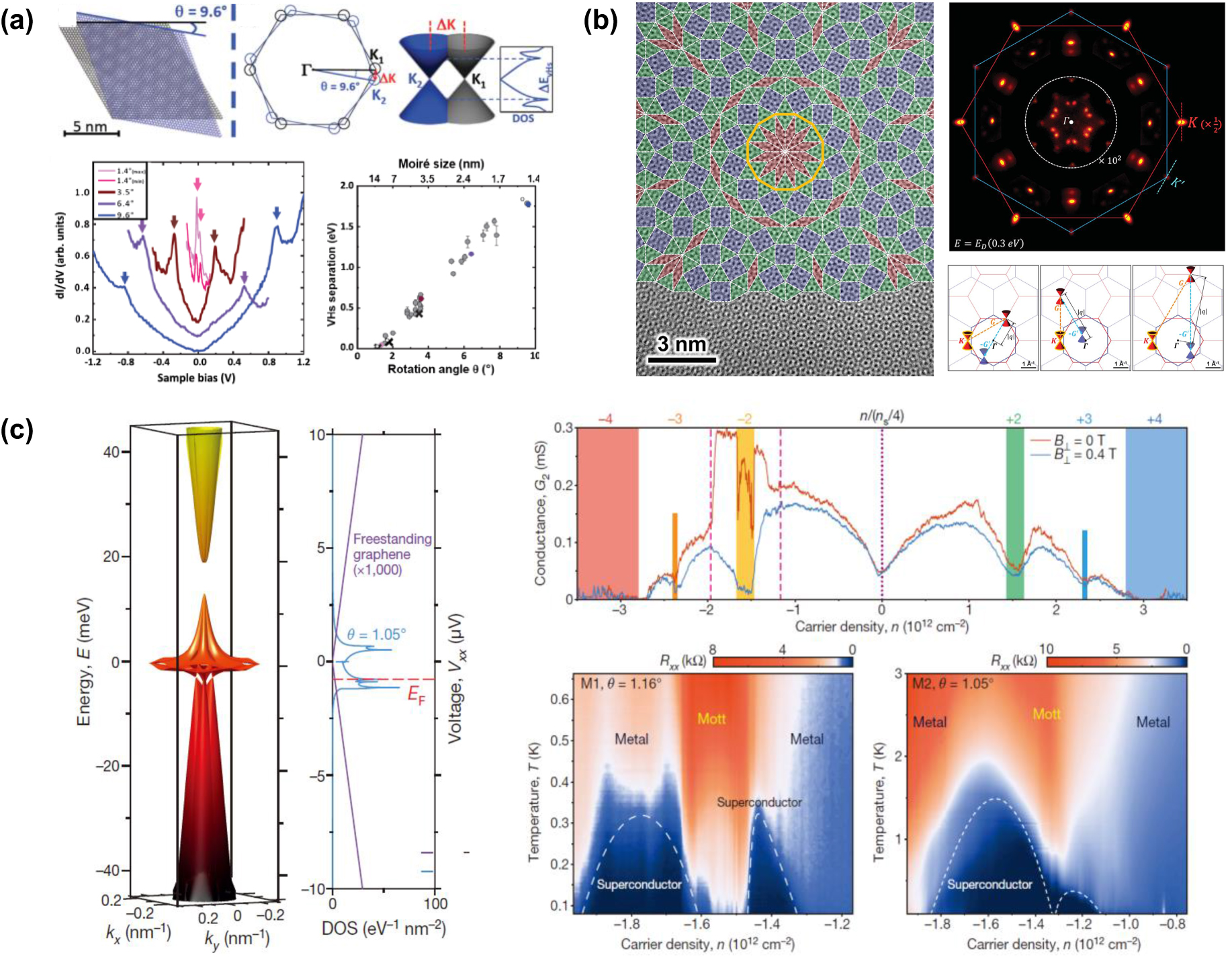|
Physical properties of twisted bilayer graphene. (a) Schematic illustration and STS results of the new van Hove singularities of twisted bilayer graphene. The interlayer interaction leads to the formation of van Hove singularities, and they correspond to the two peaks in STS measurements. The relation between the singularity energy separation and the twist angle is also shown. Reprinted with permission from Ref. [27]. Copyright 2012, American Physical Society. (b) Left, calculated band structure and density of states of twisted bilayer graphene with twist angle
θ
=
1.05
°
. Top right, two-probe longitudinal conductance results of twisted bilayer graphene with twist angle
θ
=
1.16
°
. Insulating states have been marked by background color. Bottom right, four-probe longitudinal resistance results of two twisted bilayer graphene samples with twist angles
θ
=
1.05
°
and
θ
=
1.16
°
. Reprinted with permission from Ref. [7]. Copyright 2018, Nature Publishing Group. (c) Left: illustration of quasicrystal twisted bilayer graphene. Top right: ARPES results of quasicrystal twisted bilayer graphene. Bottom right: illustration of Umklapp scattering process, which is responsible for the extra scattering points in the ARPES. Reprinted with permission from Ref. [51]. Copyright 2018, American Association for the Advancement of Science.
|
